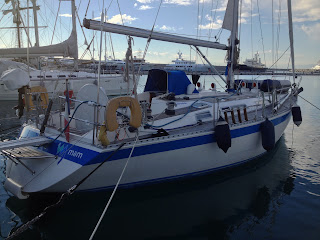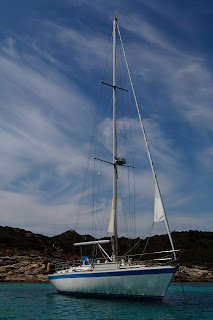Il progetto "MēM" si fonda sulla convinzione che il Mediterraneo è sempre stato una "Via di Comunicazione" semplice e diretta, che ha favorito i rapporti e gli scambi tra i paesi ed i popoli che vi si affacciano. Un luogo di incontro, un crogiulo di idee, che ha messo in relazione popoli, religioni, culture, arti... Crediamo quindi che si possa considerare il Mediterraneo come un Paese, uno Stato Liquido Multietnico e Multirazziale, abitato dagli "Uomini del Mare". Questi uomini sono gli ispiratori e i destinatari delle azioni di MēM, che intende collegare e promuovere attività istituzionali, scambi di nuove idee e di nuove pratiche per il tessuto produttivo e culturale del Mediterraneo. MēM è infatti, un progetto di comunicazione, con scopi anche sociali, finalizzati alla salvaguardia dell'ambiente e delle risorse, ed è in grado di progettare e realizzare campagne con intenti e modalità diverse da quelli tradizionali: azioni, mostre, concerti, reti... promuovendo attivamente la cultura e l'informazione, orientate alla consapevolezza e la conservazione del Mediterraneo. Nella visione di MēM, lo Stato Liquido del Mediterraneo è una condizione reale, con confini precisi, nel quale bisogna tuffarcisi e conservare costantemente in mente le radici e la storia da cui si sono formate.
MēM è la tredicesima lettera di numerose abjads semitiche, tra cui la fenicia, l'aramaico, l'ebraico e l'arabo mim م. Il suo valore è [m]. La lettera fenicia ha dato origine al Mu greco (Μ) l'etrusca M, latina e cirillica. MēM si presume provenga dal simbolo geroglifico egizio per l'acqua, poi semplificata dai fenici ed utilizzata con lo stesso significato.
MēM in ultima analisi proveniene da Proto-Semitic * ma' - / * maggio. Nel Sefer Yetzirah, la lettera MēM è re per l'acqua, la terra formata nell'universo, freddo nell'anno, e la pancia dell'anima. Nei testi religiosi ebraici, sta per il nome di Dio Makom, Place. MēM è associato con l'uomo impiccato (Atu XII), l'elemento acqua e il percorso tra Geburah appeso sull'Albero della Vita.

MēM project is founded on the belief that the Mediterranean is a “Way of Communication”, simple and direct, which has encouraged relationships and exchanges between people and countries facing it. The Mediterranean has always been a meeting place, a melting pot of ideas that unites people, religions, cultures and arts. This means that we can consider the Mediterranean as a Country, a “Multiethnic and Multicultural Liquid State” inhabited by the “Men of the Sea” and these men can be the inspired and recipients of actions suggests by MēM, connecting and promoting productive activities and institutions for the Mediterranean culture and exchange new ideas and new practices to initiate a different approach to policies and economies of this region. MēM, is in fact, a communication projects for the safeguarding of the environment and its resourses, able to design and implement campaigns with different medium than the traditional ones: action, exhibitions, concerts, networks... actively promoting the culture and information oriented to awareness and conservation of the Mediterranean area. The Liquid State of the Mediterranean is a material condition, having precise and well defined boundaries, to understand it, you have to dive in, and take constantly in mind, the roots and the substrates that have formed.
MēM is the thirteenth letter of many Semitic abjads, including Phoenician, Aramaic, Hebrew and Arabic mīm م. Its value is [m]. The Phoenician letter gave rise to the Greek Mu (Μ), Etruscan M, Latin M, and Cyrillic М. MēM is usually assumed to come from the Egyptian hieroglyphic symbol for water which had been simplified by the Phoenicians and named after their word for water. MēM ultimately coming from Proto-Semitic *maʾ-/*may-. In the Sefer Yetzirah, the letter MēM is king over water, formed earth in the universe, cold in the year, and the belly in the soul. In hebrew religious texts, it can stand for the name of God Makom, the Place. MēM is associated with the hanged man (Atu XII), the element of water and the path between Geburah and Hod on the Tree of Life.



No comments:
Post a Comment